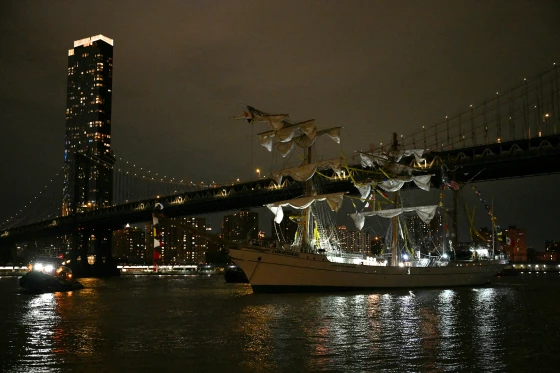Brooklyn Bridge: More Than Just a Walk Over Water
Table of Contents
- Introduction
- A Brief History of the Brooklyn Bridge
- The Engineering Marvel
- Visiting the Brooklyn Bridge
- Safety on the Brooklyn Bridge
- Recent Incidents and Safety Measures
- Conclusion
The Bridge stands tall as one of New York City’s most recognized landmarks, attracting millions of visitors each year. However, recent news about the tragic incident involving a Mexican Navy ship that crashed into the Brooklyn Bridge has raised questions about safety measures on this vital structure. This blog post explores the history, engineering, and safety of the Brooklyn Bridge, while also reflecting on recent incidents that have impacted its reputation.

A Brief History of the Brooklyn Bridge
The Bridge was completed in 1883 and became the first steel-wire suspension bridge ever constructed. Designed by John A. Roebling, this architectural marvel was built to connect Manhattan and Brooklyn, making transportation easier and faster.
- The project faced numerous challenges, including funding issues and Roebling’s untimely death, which left his son, Washington Roebling, to complete it.
- At the time of its completion, the Brooklyn Bridge was the longest suspension bridge in the world, measuring 1,834 meters (5,989 feet).
The bridge was designated a National Historic Landmark in 1964 and is a vital part of New York City’s cultural and historical identity.
The Engineering Marvel
The Brooklyn Bridge’s innovative design incorporates several unique features:
- Stone Towers: The bridge’s two iconic towers are constructed of granite and stand 276.5 feet above the water, providing a strong foundation for the cables.
- Suspension Cables: The bridge uses 16 main cables, each composed of over 5,000 wires, to support the roadway. This design allows for the natural movement of the structure, accommodating variations in weather and traffic.
These elements combine to make the Brooklyn Bridge not only a functional crossing but also an artistic representation of engineering excellence. Visitors are often in awe of its Gothic-style arches and intricate support cables, making it a favorite subject for photography and art.
Visiting the Brooklyn Bridge
Walking across the Brooklyn Bridge is a must-do activity for both tourists and locals alike. Here’s what you need to know for your visit:
- Hours of Operation: The bridge is open 24/7, so you can enjoy it at any time, whether for a sunrise stroll or a sunset view.
- Best Times to Visit: Early mornings or late afternoons are ideal to avoid crowds.
- Walking Vs. Biking: Pedestrian walkways are available on both sides of the bridge, while biking is allowed on a designated lane, providing flexibility for all visitors.
Local tips:
- Bring a camera to capture the stunning views of the Manhattan skyline.
- Consider visiting nearby attractions like Jane’s Carousel in Brooklyn Bridge Park for a complete experience.
Safety on the Brooklyn Bridge
Safety is a top priority for the management of the Brooklyn Bridge. Various measures are in place to ensure the well-being of pedestrians and cyclists:
- Regular Inspections: The bridge undergoes regular structural assessments to identify and address maintenance needs.
- Law Enforcement Presence: NYPD has a dedicated team that monitors the bridge, especially during peak hours, to ensure the safety of all visitors.
However, incidents can occur, as evidenced by the crash involving the Mexican Navy ship, which serves as a reminder of the importance of continued vigilance.
Recent Incidents and Safety Measures
The recent unfortunate event where two died as a Mexican Navy ship crashed into Brooklyn Bridge highlighted the vulnerabilities of both maritime and structural safety in the area. This tragic incident raised numerous questions about the bridge’s current safety measures and protocols.
In response, officials have:
- Increased patrols along the bridge.
- Conducted emergency drills to prepare for potential emergencies.
- Collaborated with local maritime authorities to address issues related to vessel navigation around the bridge.
These steps aim to mitigate risks and ensure that such tragic incidents do not happen again.
Conclusion
The Brooklyn Bridge remains a symbol of New York City’s ingenuity and resilience. With a rich history and stunning design, it continues to be an essential part of city life. While incidents like the recent crash remind us of the need for ongoing safety efforts, they do not overshadow the bridge’s role as a beloved landmark. Whether you’re planning your first visit or your hundredth, walking across the Brooklyn Bridge is an experience that highlights the vibrant spirit of New York City. Share your experiences or thoughts in the comments below!




